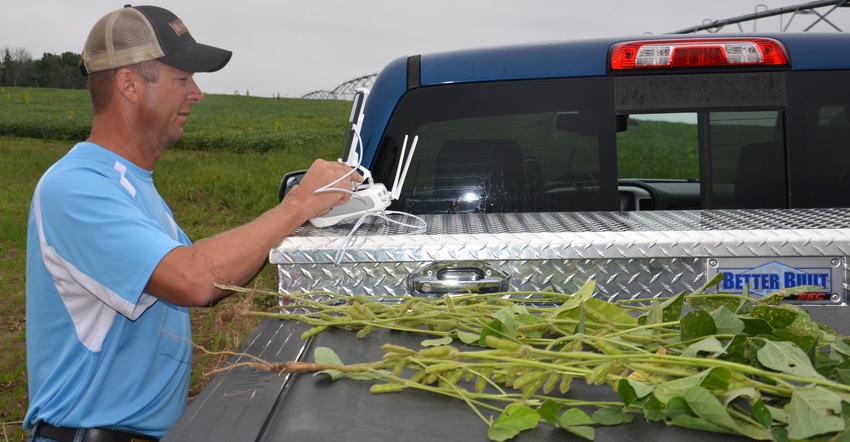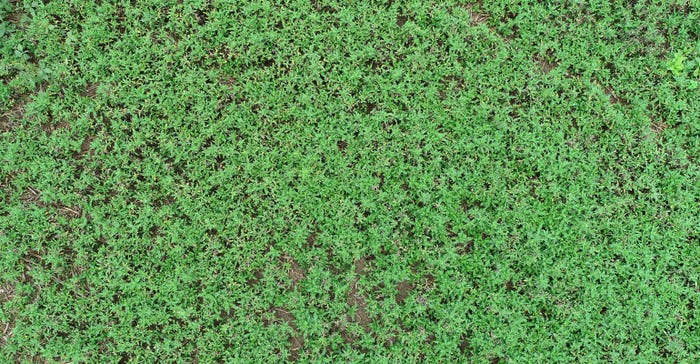
This year’s Soybean Watch ’20 field included a moderate-sized hill upfront with a long slope down the back side, winding up on level soil underlain by gravel at the far end. It’s a poster child for why drive-by scouting or just walking the front edge of a field can be misleading. In fact, “worthless” isn’t too strong of a word for it.
“You really need to see over that hill to get a true picture of the entire field,” says Steve Gauck, regional agronomy manager for Beck’s, based near Greensburg, Ind. Beck’s sponsors Soybean Watch ’20.
Walking 15-inch-row soybeans late in the season is a challenge. Gauck chose to look over the hill in mid-September by flying his DJI Phantom 4 unmanned aerial vehicle. He flew it manually over the entire 50-plus-acre field, flying lower over spots where he wanted to get a closer look. He soon found an oval-shaped weed patch on the back side of the slope, hidden from view when standing at the field’s entrance. He could tell it was a weed patch by the brighter green color.
Weedy surprise
The grower, present while Gauck’s drone flew over the field, wasn’t surprised by the weed patch. Although overall weed control was good, he battled a couple of patches of giant ragweed during the season. They escaped planned herbicide applications. He went after them with broadleaf postemergence herbicides and burned them back.
So, learning there was a weed patch was no big deal. The surprise came when Gauck brought the drone lower for a closer look. “Those sure look like Canada thistles,” he observed. Later, once he pulled up an image of the flight on his computer and zoomed in, the distinctive shape of young Canada thistles was obvious. They weren’t giant ragweed after all.

WHAT ARE THOSE? The grower wasn’t surprised to find a weed patch over the hill, out of view from walking into the edge of the field. But he was expecting giant ragweed, not Canada thistle.

Where did they come from? Obviously, they were there before, Gauck says. Controlling the giant ragweed with postemergence herbicides apparently opened the canopy for Canada thistles to shoot up later. Because the farmer irrigated the soybeans, young thistles received moisture necessary to thrive, even though it was dry in the area.
“Without flying the field, assuming we weren’t going to walk it, we wouldn’t have found them,” Gauck says. “Now that the grower knows they’re there, he can plan his own surprise attack.”
Weed scientists say fall is a great time to control Canada thistles if they’re actively growing. There’s a better chance of getting herbicides into the roots and providing permanent control. Thistles can be sprayed anytime before a killing freeze.
“Sometimes you find other things that are important,” Gauck concludes. “This time we found Canada thistles.”
About the Author(s)
You May Also Like




